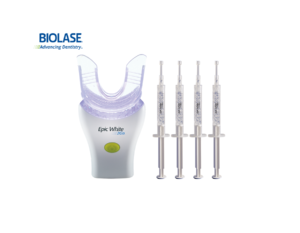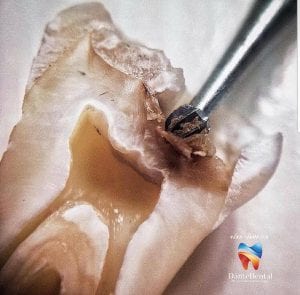Did you know that you can whiten your smile by 2-3 shades in just 20 minutes? Not only that, but professional teeth whitening procedures are also needle-free and do not require the use of a dental drill. Instead, the process is as simple as applying the whitening agent, turning on an LED light, and just sitting back.

Sound too good to be true?
Well, generally yes but that’s not the case. Modern technology has actually made it possible to get a whiter and brighter smile quickly and easily. And yes, light does play a role in the accelerated whitening process. However, running a simple LED light on your teeth will not whiten your teeth. To understand how LEDs play a role in the whitening process, you must first understand the basics of how LED teeth whitening works.
What are the basics of teeth whitening?
Since the teeth are porous, the whitening gel is absorbed by the enamel and dentine layers of the tooth. The active ingredient in the whitening gel is hydrogen peroxide, which removes stains and is then safely absorbed by the body. Most over-the-counter whitening products use low concentrations of hydrogen peroxide, while cosmetic dentists use higher concentrations to get faster and more effective results.
This is because when applied to the teeth, hydrogen peroxide acts as a catalyst for an oxidation reaction to occur. The oxidation reaction breaks down the molecular bonds of faded molecules, causing the stains to disappear. In simpler words, hydrogen peroxide dissolves stains from the enamel and dentin layers in order to whiten the teeth. Although the whitening gel is only on the teeth for a limited time, it will remain effective for the first 24 hours after application.
Why LED teeth whitening?
You are probably wondering how an LED light can help this process. An LED, or Light Emitting Diode, emits a single color of light on the visible light spectrum when exposed to electricity. In the past, ultraviolet UV light was used to aid in the whitening process. However, UV light has been found to cause cell mutations that can lead to cancer!!
Therefore, LED lights quickly replaced UV lights for whitening procedures. LED bulbs require minimal power, are long lasting and do not require a warm-up period to be effective. Although their light is stronger than other types of light, they are also much cooler due to their ability to dissipate heat. All these things make it an ideal light for teeth whitening.
How does the LED help in teeth whitening?
Incorporating LED in the LED teeth whitening process accelerates the chemical reactions that remove the stains from the teeth.
As mentioned, whitening agents are effective for 24 hours. Therefore, speeding up the chemical reactions simply means that more stains can be removed during that time period. In the end, the more stains are removed, the brighter your smile will be. On average, LED teeth whitening can whiten your smile by 2-3 shades during a single whitening.
Overall, adding LED lights to whitening procedures has improved the effectiveness of whitening agents, allowing for brighter, whiter smiles. However, it is the whitening agent that remains the main component of the whitening treatment. Although results cannot be achieved with an LED light alone, phenomenal results are obtained when used with a whitening gel adapted to the LED light being used.
User guide:
Its time to begin treatment. detailed instructions in the following link
Read now >>> Led teeth whitening part 2










